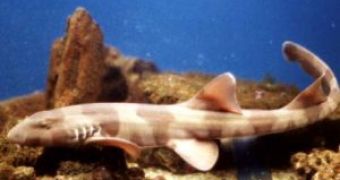A five years survey on local fish market in Indonesia led to the discovery of at least 20 previously unknown species of sharks and rays by an Australian team.
Indonesia is the world's most extensive archipelago, with more than 17,000 islands, located in a tropical climate and regarded as possessing the highest diversity of native marine wildlife in the world.
Six of the new 14 species have been already described in scientific journals, like the Bali catshark, the Jimbaran shovelnose ray, and the Hortle's whipray.
More than 130 species were studied at 11 ports across Indonesia and the work comes with the first ever detailed description of Indonesia's shark fauna, crucial information to their conservation. "Indonesia has the most diverse ray and shark fauna in the world," said study co-author William White, of the marine research division of Australia's Commonwealth Scientific and Industrial Research Organization (CSIRO) based in Hobart, Tasmania.
"The island region also has the world's largest shark and ray fishery, with reported landings of more than 110,000 tons (100,000 metric tons) a year. Good taxonomic information is critical to managing shark and ray species, which reproduce relatively slowly and are extremely vulnerable to overfishing. Before this survey, however, there were vast gaps in our knowledge of sharks and rays in this region", said White.
The data gathered by the Australian team will be also employed for assessing population sizes, the impacts of fishing, and conservation measures for imperiled species. "This survey is a really important start toward the process of providing names for these animals and starting to draw people's attention to the fact they could be threatened almost before they are described", said Sarah Fowler, co-chair of the shark specialist group for the nonprofit World Conservation Union (IUCN).
This research is also the basis for a new field guide called Economically Important Sharks and Rays of Indonesia, available in English and Indonesian, the first after that made in 1860 by Dutch scientist Pieter Bleeker after 18 years of research and describing more than 1,100 new fish species.
Such high levels of biodiversity were doubted at those times by European scientists, but many of Bleeker's species have been rediscovered more than a century later. "It's extraordinary-for large animals like this-just how many new species are being discovered," Fowler said.
30 % of sharks and rays in Indonesia are endemic (found only there). "So it's not a surprise that as people go through the markets in Indonesia that they find these new species. Many of the smaller sharks living in the waters around Indonesia are not found elsewhere, because they are not good swimmers", she said.
Sharks are threatened especially by small, intensive coastal fisheries and subsistence fisheries. "Together, both fishing practices take very, very large quantities of sharks and rays."

 14 DAY TRIAL //
14 DAY TRIAL //